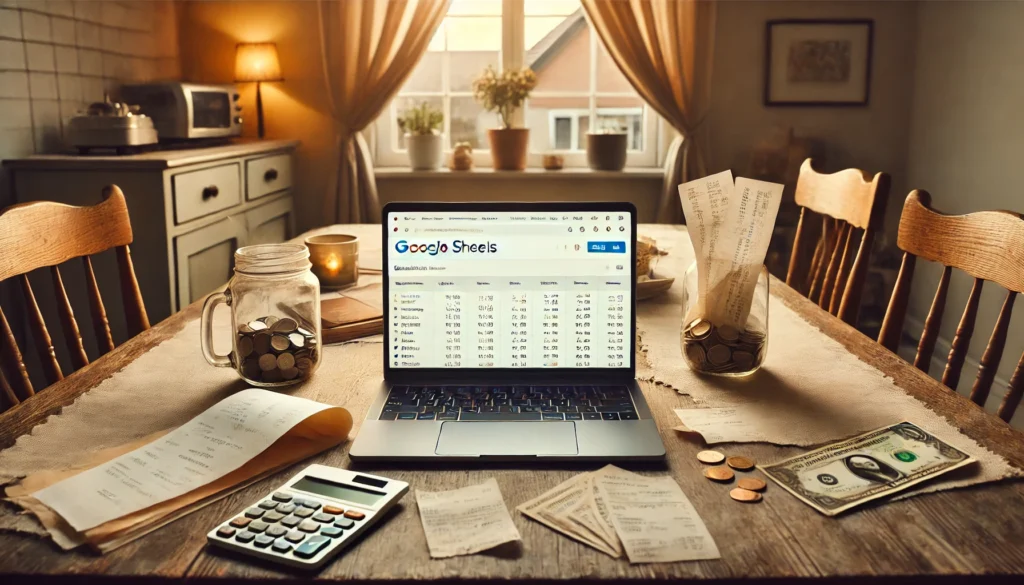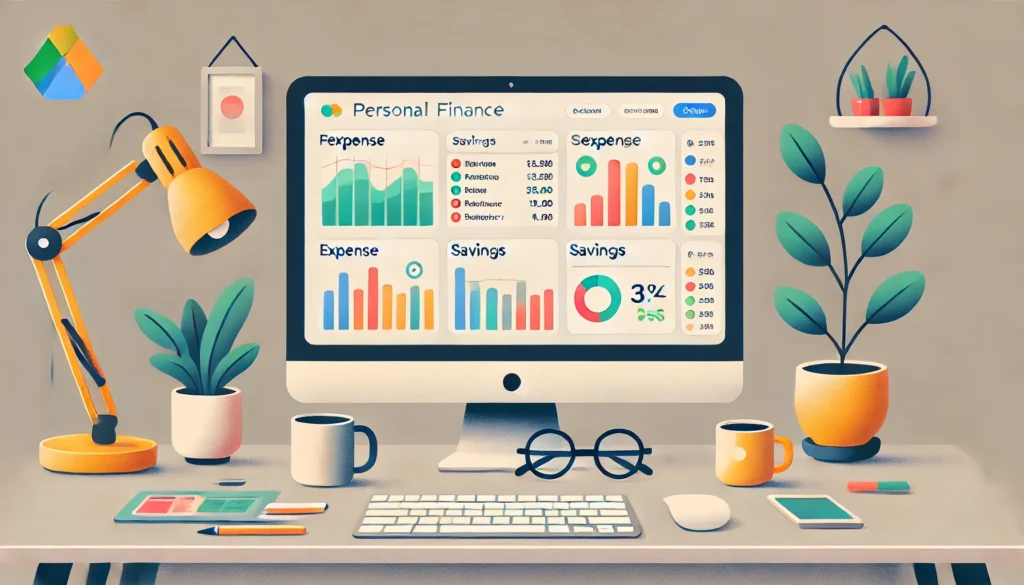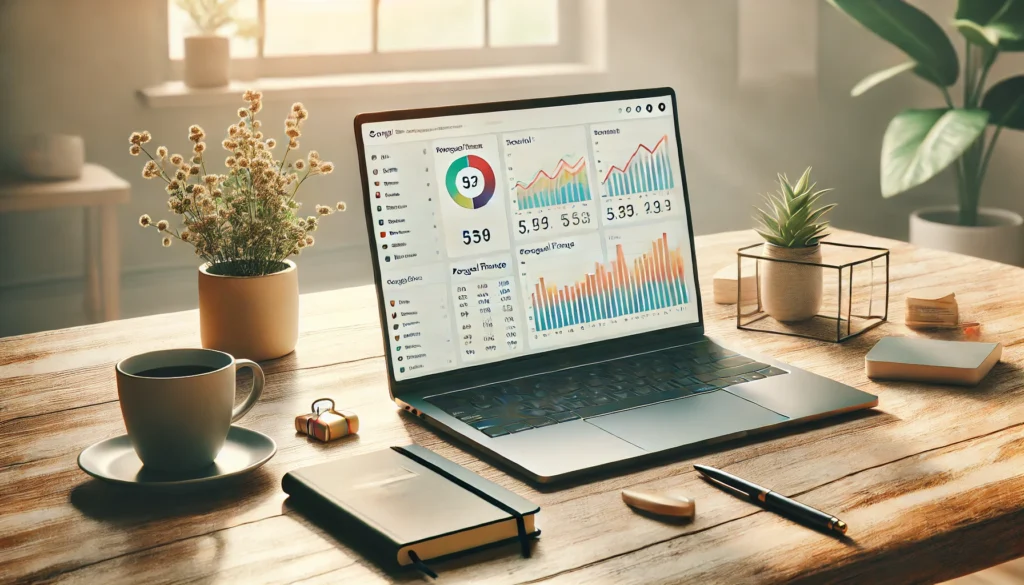Harnessing the power of technology in the pursuit of financial well-being is no longer optional—it’s essential. In an era where every dollar counts and inflation eats away at purchasing power, developing a sustainable and effective budgeting strategy has become a necessity. For individuals dedicated to a frugal lifestyle, this means more than simply cutting costs—it requires a system for tracking, adjusting, and optimizing every financial move. This is where a personal finance tracker Google Sheets template becomes an invaluable asset. It’s not just a tool for record-keeping, but a dynamic framework that brings visibility, structure, and long-term strategy to your financial life.
You may also like: 10 Genius Frugal Living Hacks: Effective Ways to Save Money on Household Bills
Understanding the power of Google Sheets as a financial tool is crucial for anyone striving to live intentionally. With its customizable grid layout, integrated formulas, and real-time collaboration capabilities, Google Sheets provides more than just a canvas for numbers. It offers a flexible yet powerful ecosystem in which frugal living strategies can be refined and executed with precision. A personal finance tracker in Google Sheets helps transform your approach to money management by creating clarity around income, expenses, savings, and goals. It provides the structure you need to track where your money is going and the insights you need to decide where it should go instead.
The beauty of integrating a finance tracker Google Sheets tool into your lifestyle lies in its balance between simplicity and depth. Unlike many paid budgeting platforms that come with learning curves or subscription fees, a well-designed Google Sheets template gives you full control. Whether you’re using an expense sheet template to tally daily coffee runs or a monthly expense tracker Google Sheets file to plan next month’s groceries, the template adapts to your financial habits. With careful use, even the most basic spreadsheet can evolve into a financial dashboard that guides every aspect of your frugal journey.
What truly sets a Google Sheets expense tracker template apart is its ability to support decision-making in real time. Instead of waiting until the end of the month to analyze spending patterns, users can continuously update their sheets, identify leaks, and shift priorities. This proactive method of expense tracking empowers you to anticipate problems before they arise and seize opportunities to save before money slips through the cracks. In essence, it aligns with the core philosophy of frugal living—not just to spend less, but to spend smarter.
Beyond budgeting, the personal finance tracker Google Sheets approach fosters mindfulness. Each category you create, each formula you write, and each entry you make forces a moment of reflection. Are you spending in alignment with your values? Are you budgeting based on real patterns or idealized ones? When used consistently, a Google Sheets income and expense template can evolve into more than a record of transactions. It becomes a diary of financial growth, discipline, and increasingly refined decision-making.

Why Google Sheets Stands Out as a Frugal Finance Tool
Google Sheets’ universal accessibility and no-cost framework make it one of the most attractive tools for budget-conscious individuals. Unlike many premium finance apps that hide features behind paywalls or require annual fees, Google Sheets is entirely free and available to anyone with a Gmail account. For those pursuing a frugal living strategy, this represents a significant advantage. By choosing a Google Sheets expense tracker template free of charge, users gain access to a comprehensive financial management system without adding a line item to their budget.
Its cloud-based structure offers the convenience of anytime, anywhere access. Whether you’re checking your income tracker Google Sheets file during a lunch break or reviewing your expense tracking Google spreadsheet at night from your tablet, the platform ensures that your data is never more than a few clicks away. This is critical for maintaining consistency in financial tracking, especially in a lifestyle that demands ongoing adjustments and refinements. The immediacy of access means that impulse purchases or unexpected bills can be logged instantly, preventing backlogs and errors.
One of the most compelling features of using a finance tracker Google Sheets template is the degree of customization it allows. Unlike one-size-fits-all apps, Google Sheets encourages you to mold your spreadsheet around your unique financial situation. You can create detailed tabs for recurring bills, discretionary spending, debt repayment, or even specific savings goals like a vacation or emergency fund. With formulas that automate totals, calculate percentages, or flag overspending, the tool becomes as simple or sophisticated as you need it to be.
Frugal living thrives on awareness and intentionality—qualities that a well-maintained expense tracking Google Sheet fosters through visual feedback. Conditional formatting can highlight when spending exceeds set limits, while charts and graphs can reveal spending trends over time. These visual cues make it easier to identify patterns, encouraging informed decisions rather than reactive ones. Whether it’s noticing a steady rise in utility costs or a seasonal spike in entertainment expenses, the insight gained enables smarter budgeting and sharper adjustments.
Moreover, the collaborative features of Google Sheets open up new possibilities for households pursuing frugal living together. Couples, roommates, or families can share access to a single Google Sheets income and expense template, ensuring transparency and joint accountability. This kind of shared structure not only prevents misunderstandings but promotes unified goals, where every member plays a part in maintaining financial discipline and celebrating milestones.
Building the Ultimate Expense Tracking Google Spreadsheet
Creating an expense tracking Google spreadsheet that aligns with frugal living principles requires more than just listing income and expenses. It begins with clearly defining financial categories that reflect your real-life habits. Instead of generic labels like “Miscellaneous” or “Other,” consider categories that force specificity and foster awareness. For example, rather than a broad “Dining Out” category, separate it into “Coffee Shops,” “Fast Food,” and “Restaurants”—each of which can tell a different story about your spending priorities.
After organizing your categories, the next essential step is to determine your income streams. A comprehensive income tracker Google Sheets template should distinguish between regular and irregular income. This means accounting for side gigs, freelance payments, bonuses, or rental income alongside your main salary. By mapping every stream of income, you can better understand fluctuations and avoid underestimating your financial flexibility. This level of detail not only supports budget planning but ensures that you make the most of every dollar earned.
Incorporating dynamic formulas and automation into your spreadsheet elevates its functionality. With functions like SUMIF, ARRAYFORMULA, and conditional formatting, you can create real-time calculations that adjust as new data is entered. Want to know instantly if you’ve surpassed your grocery budget? A formula can do that. Need to calculate what percentage of your income went to transportation last month? Another formula can give you the answer in seconds. These features help eliminate the guesswork, allowing your monthly expense tracker Google Sheets tool to become an intelligent assistant rather than a passive logbook.
To ensure your tracker remains relevant, regular reviews and refinements are necessary. A monthly check-in with your personal finance tracker Google Sheets file can help you reflect on what’s working and what’s not. Did you budget too little for utilities? Are there subscriptions that no longer serve you? These insights allow you to revise not just your spreadsheet, but your entire approach to spending and saving. This is where the real value of the tracker shines: its ability to evolve alongside your financial habits.
Over time, your expense tracking Google spreadsheet can become a historical record of your progress, one that reveals not just numbers but narratives. You’ll be able to see how small changes—like cooking more meals at home or biking instead of driving—translated into measurable savings. These visual stories provide both motivation and validation, reinforcing the principles of frugal living and the wisdom of diligent tracking.

Frequently Asked Questions (FAQ)
1. How can I use Google Sheets to track my expenses more effectively?
To maximize the benefits of using Google Sheets for expense tracking, start by customizing an expense sheet template to fit your spending habits. Utilize categories like fixed expenses, discretionary spending, and savings goals to maintain a well-organized view. Automate calculations by incorporating formulas that track totals and averages, reducing manual errors. If you’re managing shared expenses, using cloud collaboration features allows real-time updates with family members or roommates. Additionally, setting up conditional formatting can help highlight unusual spending patterns, making your expense tracking Google Sheet a proactive financial tool.
2. What are some advanced features I can add to my Google Sheets expense tracker template?
Enhancing your Google Sheets expense tracker template with advanced features can improve efficiency and accuracy. Consider integrating scripts to automate expense categorization, which eliminates the need for manual sorting. You can also use data validation to create dropdown menus for expense categories, ensuring consistent data entry. Another powerful addition is a dynamic dashboard with charts and graphs to visualize spending trends over time. If security is a concern, restrict access levels to sensitive financial data while still allowing collaborative inputs. These refinements can transform a simple expense tracker Google Sheets file into a robust financial management tool.
3. How do I customize an income and expense tracker Google Sheets template for business use?
A Google Sheets income and expense template tailored for business should include dedicated sections for revenue streams, tax deductions, and profit margins. To maintain accuracy, consider linking bank transaction data using third-party add-ons that sync with Google Sheets. Implementing filters and pivot tables helps generate insightful reports on spending patterns and income growth. If handling multiple currencies, incorporating real-time exchange rate formulas can streamline international transactions. Structuring your Google Sheets expense tracker template free of clutter enhances clarity, making financial decision-making more strategic.
4. Can a Google Sheets finance tracker replace traditional budgeting software?
A finance tracker Google Sheets setup can serve as an alternative to budgeting software, especially for those who prefer customization over automation. Unlike predefined software, Google Sheets allows users to modify expense tracking structures to align with unique financial goals. With built-in formula capabilities, it can replicate many features of paid software, such as automated categorization and financial forecasting. However, traditional budgeting apps may offer deeper integrations with bank accounts, requiring manual imports when using Google Sheets. For users comfortable with spreadsheet functions, a well-structured Google Sheets expense tracker template free of subscription costs can be an effective alternative.
5. How do I automate monthly tracking in my Google Sheets income tracker?
To streamline monthly tracking, set up a Google Sheets income tracker with recurring expense formulas to auto-populate fixed costs. Use array formulas to dynamically update expenses based on date entries, reducing redundancy in manual data entry. A rolling budget tracker can be achieved using scripts that shift monthly balances forward, ensuring continuous financial oversight. Conditional formatting alerts can highlight excessive spending, providing instant visual feedback. These automation strategies make your monthly expense tracker Google Sheets template more efficient and user-friendly.
6. How can I ensure my Google Sheets expense tracker is secure?
Since financial data is sensitive, securing your Google Sheets expense tracker is crucial. Utilize Google’s built-in security features, such as restricted sharing options, to limit access to trusted users. Enable version history to track any unintended modifications and restore previous entries if needed. If handling highly confidential data, consider encrypting specific details before entering them into your expense tracking Google spreadsheet. Setting up two-factor authentication on your Google account adds an additional layer of protection. By following these security practices, you can confidently use your simple expense tracker Google Sheets file without compromising personal information.
7. What are some common mistakes to avoid when using an expense tracking Google Sheet?
One of the biggest mistakes is failing to update the tracker consistently, leading to inaccurate financial insights. Another common issue is neglecting to categorize expenses properly, which distorts budgeting accuracy. Overcomplicating the template with unnecessary formulas can make it harder to maintain and deter regular use. Many users forget to reconcile their digital records with actual bank statements, increasing the risk of errors. Lastly, not backing up the Google Sheets expense tracker template free from potential data loss can lead to major setbacks.
8. How can I analyze spending trends using my Google Sheets income and expense template?
To gain deeper financial insights, use pivot tables to summarize expenses by category and time period. Creating trend charts allows you to visualize fluctuations in spending habits, identifying areas where costs can be reduced. Applying percentage-based calculations can reveal how much of your income goes toward each category, improving budget allocation. If using a personal finance tracker Google Sheets file, setting up goal-based tracking can help measure progress toward savings targets. With these tools, your expense tracking Google Sheet becomes more than just a log—it becomes a financial strategy guide.
9. What’s the best way to organize shared expenses in a Google Sheets expense tracker?
For households, roommates, or group travel, a Google Sheets expense tracker template free from complexity is key for shared financial management. Creating separate columns for each contributor’s expenses ensures clarity in financial contributions. Using Google Sheets’ real-time collaboration feature allows participants to log expenses as they occur. Implementing split-cost formulas can automatically calculate individual shares, reducing the hassle of manual division. A well-structured shared finance tracker Google Sheets setup helps prevent misunderstandings and promotes financial transparency.
10. How can I track irregular or unexpected expenses in my Google Sheets expense tracker?
Unexpected expenses can derail a budget, making it essential to incorporate a contingency category in your Google Sheets expense tracker. Labeling these costs separately from recurring expenses helps assess their frequency and impact. To forecast future irregular expenses, analyze past entries and set aside emergency funds accordingly. Consider creating an automated alert that highlights significant unexpected costs in your expense tracking Google spreadsheet. By proactively managing these outliers, you enhance financial resilience and avoid budget shortfalls.

Conclusion: Transforming Frugality into a Lifestyle with a Personal Finance Tracker Google Sheets Template
Embracing frugal living isn’t about deprivation—it’s about intention, clarity, and strategic resourcefulness. A well-crafted personal finance tracker Google Sheets template serves not only as a digital tool but as a powerful catalyst for transforming the way you interact with money. It brings structure to your goals, transparency to your habits, and actionable insight into every dollar you earn or spend. With the simplicity and accessibility of Google Sheets, frugal families and individuals alike gain the ability to make more informed choices—day after day, month after month—without ever needing to invest in costly budgeting software.
By committing to a system like a monthly expense tracker Google Sheets template, you’re giving yourself the framework to be consistently aware of your spending patterns. This heightened awareness is one of the most powerful tools in any frugal living strategy. It allows you to notice the small leaks in your budget before they become floods, to identify opportunities for increased savings, and to pivot quickly when financial circumstances change. The more granular and consistent your data, the more precise your adjustments can be—and in personal finance, precision matters.
What sets a finance tracker Google Sheets apart from other platforms is not only its cost-effectiveness—especially when using a Google Sheets expense tracker template free of charge—but also its flexibility. You’re not confined to pre-set categories or rigid rules. You can adapt your template to reflect your unique priorities, whether you’re budgeting for a growing family, tracking freelance income, or simply trying to cut back on dining out. As your goals evolve, so too can your income and expense tracker Google Sheets design, making it a dynamic and responsive partner in your financial journey.
Ultimately, frugal living thrives when it’s supported by systems that make your habits sustainable. A simple expense tracker Google Sheets may appear minimal on the surface, but its impact is anything but small. Over time, the consistent use of an expense tracking Google spreadsheet builds powerful habits rooted in mindfulness, intentionality, and control. It empowers you to live within your means, grow your savings, and invest in what truly matters—whether that’s peace of mind, financial independence, or a more secure future for your family.
The road to financial wellness doesn’t require complexity—it requires clarity, discipline, and the right tools. With the help of a personal finance tracker Google Sheets template, frugal living becomes less of a challenge and more of a lifestyle rooted in purpose, adaptability, and long-term success. When you track every penny, you uncover the power in every decision—and that, more than anything else, is the key to thriving on a frugal path.
frugal budgeting tools, digital budgeting strategies, spreadsheet for personal finance, household budgeting software, saving money tips, frugal living tools, DIY budgeting solutions, income tracking spreadsheet, home finance management, customizable budget spreadsheet, smart money tracking, budget-conscious living, cloud-based budget tools, finance spreadsheet ideas, minimalism and money, financial awareness tools, organized personal finance, zero-based budgeting, tech-savvy frugal living, everyday expense management
Further Reading:
How to Create a Spending Tracker in Google Sheets using AI
How to Make a Budget Spreadsheet with AI
Google Sheets Budget Template — How to Organize Your Money
Legal Disclaimer
The information provided in this article is for general informational purposes only and is not intended to constitute financial, investment, legal, tax, or other professional advice. The content should not be relied upon for making any financial or investment decisions. Readers are encouraged to consult with licensed professionals, such as financial advisors, attorneys, or tax experts, to obtain personalized advice tailored to their individual circumstances. The author and publisher disclaim any liability for any actions taken or not taken based on the information provided in this article.




